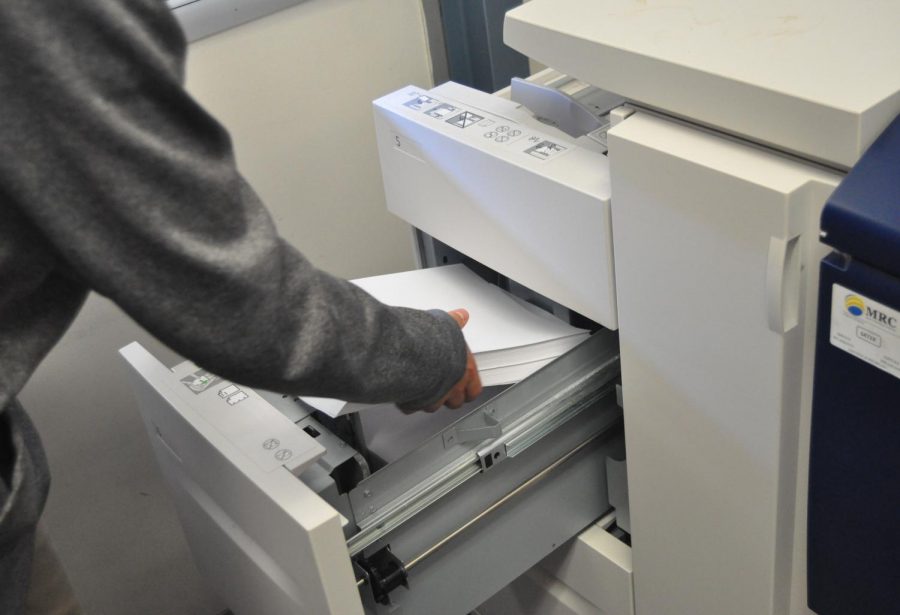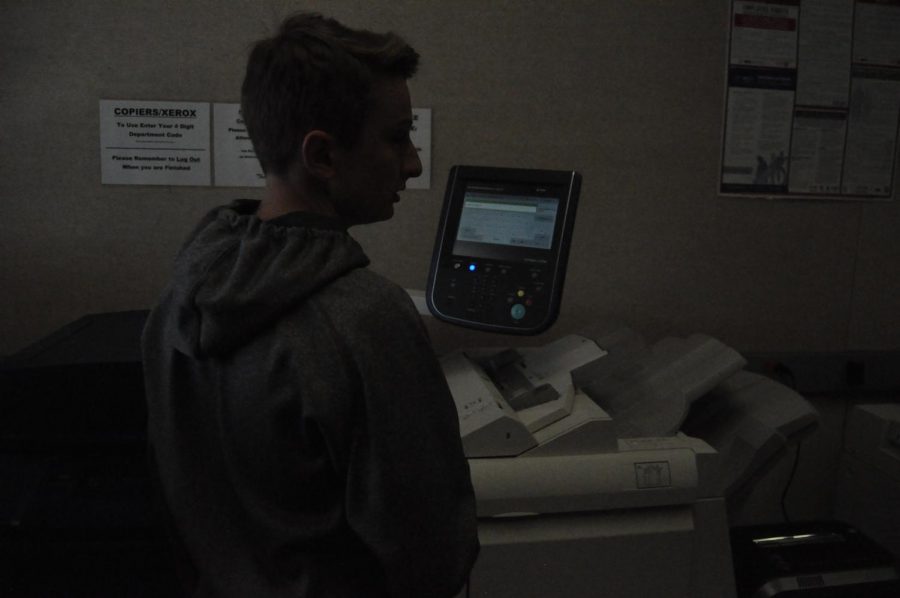Paperless Instruction Needs Implementation
April 30, 2019
Hydration stations line our hallways, solar panels tower above the Senior Lot, and for every gray garbage can on campus there exists a bright blue recycling bin next to it.
However, our classrooms generate such an overwhelming amount of waste that any achievements in waste management are virtually meaningless. Specifically, the excessive consumption of paper on campus is preposterous and wildly detrimental to the welfare of the earth.
Finance Technician Jannine Takahashi-Crow purchases the school’s printer paper, which is used communally by the counseling, administration, and teaching staff. It is this paper that our teachers use for handouts, tests, labs, and copies in general.
According to Takahashi-Crow’s statistics, the school burns through 40 cases of white paper every 6 weeks. Each case is 20 pounds of paper, meaning each school year, this school alone uses 4,800 pounds of paper.
That is roughly equivalent to 8 trees, each approximately 45 feet tall.
8 trees may seem inconsequential. It’s hard to imagine that our massive planet would notice, as there are about 3 trillion trees. But 8 trees per high school campus adds up quickly.
On our current path, Campolindo will destroy a forest the size of Moraga in about 38 years. If it has consumed that much paper annually since its opening in 1962, it already has.
One might assume that with the privilege of living in the “age of technology” we wouldn’t be so dependent on nonrenewable natural resources. Yes, the internet provides an integral part of our research, knowledge, and learning processes, however, the transition to paperless instruction is far too slow.
Even though a chrome book or computer of some kind is listed as an everyday basic necessity for students of the Acalanes School District, most teachers are still following the same procedures they used decades ago. The opportunity these devices propose to take the place of paper in the learning environment are endless, but I find myself only opening my chrome book to read an article, complete busy work, or type an essay I eventually have to print.
Other schools don’t have the funding to trade their paper homework for online programs; Acalanes has the funding, but doesn’t use it to properly address the issue of paper waste.
We have the tools to solve our paper plight, we simply need to put them to use.
Websites such as Google Classroom give teachers the opportunity to have students type essays or projects, take quizzes, and turn it all in completely via the worldwide web without using a single sheet of paper.
By having a majority of assignments online, students will also no longer misplace documents at home.
I understand that calling for all of the curriculum to be translated onto a computer cannot be done overnight. But if our teachers make small sacrifices like trying an online test, utilizing Google Classroom, or implementing a slide show presentation rather than a poster project, the amount of paper we purchase can easily be reduced, and the risk of an uninhabitable planet delayed.


